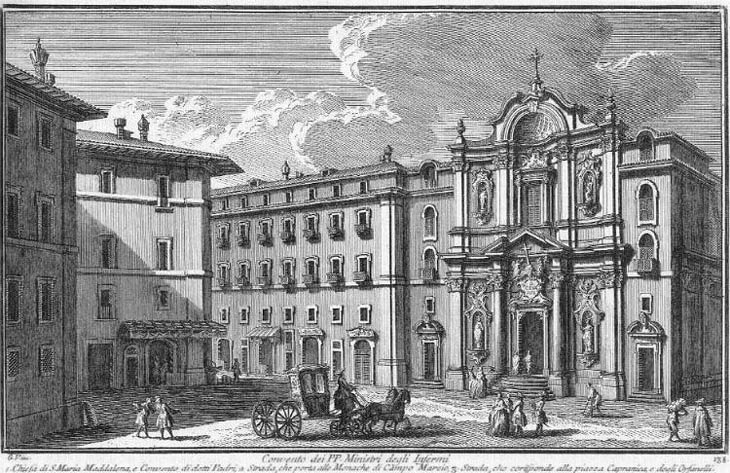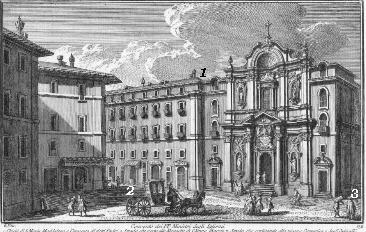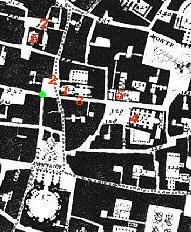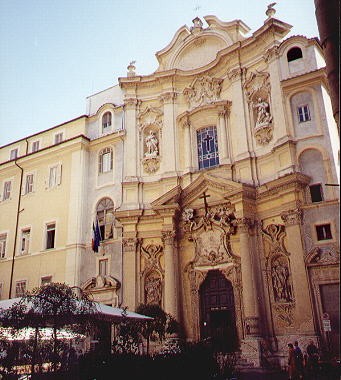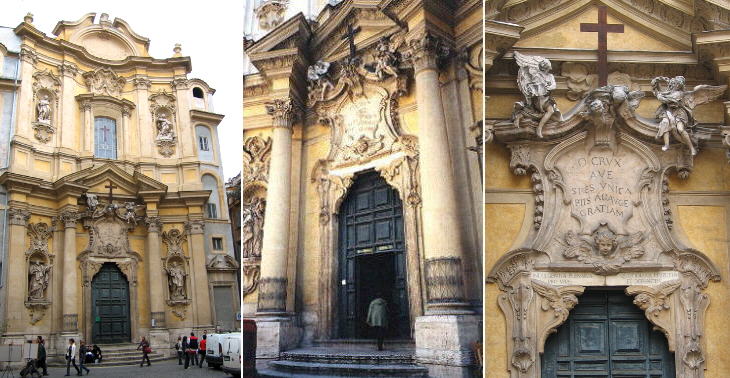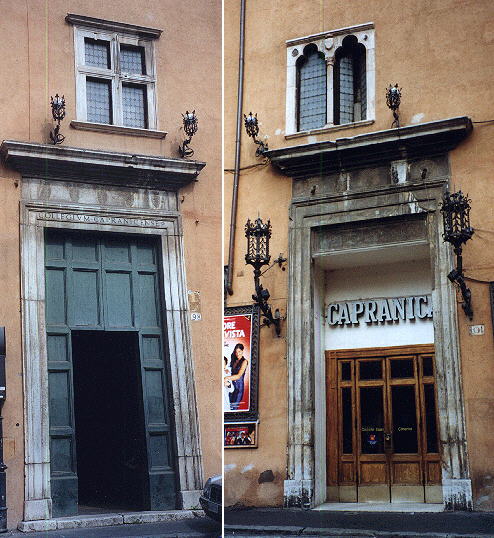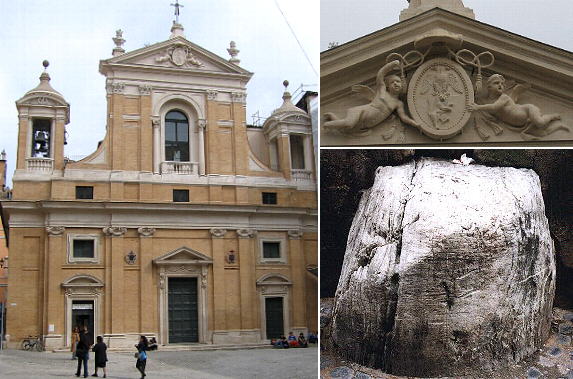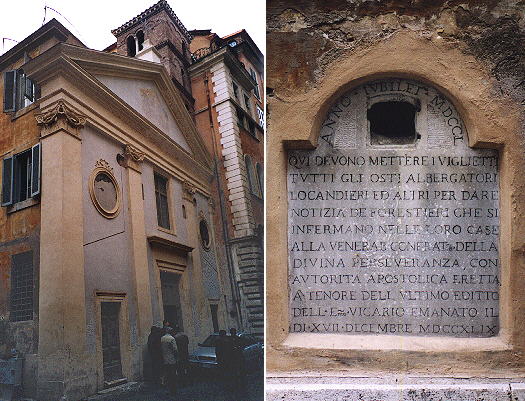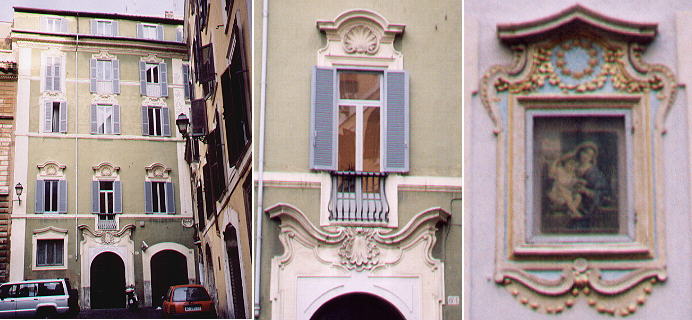  Chiesa di S. Maria Maddalena (Book 7) (Map C2) (Day 4) (View C6) (Rione Colonna) and (Rione Sant'Eustachio) In this page:
The church of S. Maria Maddalena was completed in 1735. Its rich
decoration is the best example of Rococo in Rome, but was not much praised.
Vasi spends the two pages dedicated to this plate to narrate the life of
the Order, but is almost silent on the church. The view is taken from the green dot in the 1748 map below.
In the description below the plate Vasi made reference to: 1) S. Maria Maddalena; 2) Street leading to the nuns of Campo Marzio; 3) Street leading to Collegio Capranica.
The map shows also 4) S. Maria in Aquiro; 5) Collegio Capranica; 6) S. Salvatore alle Coppelle; 7) Piazza delle Coppelle.
The dotted line in the small map delineates
the borders between Rione Sant'Eustachio (left) Pigna (lower right quarter) and Rione Colonna (top right quarter).
The little square is untouched apart from some small trade going on.
This church is close to the Pantheon, but
is not in the tourist itineraries, which usually suggest going to Piazza
Navona via Piazza de' Crescenzi. It
can be considered the peak of over-decoration in Rome. A more sober approach
will prevail and in the XIXth century this facade will be considered an
example of bad taste.
Vasi mentions in the plate the street leading to Collegio Capranica, built by Cardinal Domenico Capranica in 1457 to promote ecclesiastical studies. In 1527 the students of the college died fighting against Charles V's mercenary troops at Porta S. Spirito, thus helping Clemens VII in gaining refuge in Castel S. Angelo. The palace retains some nice windows, both in Guelf and Gothic styles. The left entrance (on the top of which some coats of arms of Cardinal Capranica and Pope Nicholas V can still be guessed at) leads to the still existing Collegio Capranica, the right entrance to a cinema which has replaced a former theatre.
A church was built on this site in the Vth century at the expense
of a Cirus, after which the church was called "a ciro", hence Aquiro. The
current façade was completed in 1774 by Pietro Camporese. The interior
was entirely redesigned in 1866; in it you can see
the fine Monument to Archbishop Carlo di Montecatini by Domenico Guidi. A little street leads from here to Piazza
di Pietra. The name of the street "Via della spada d'Orlando" (Roland's
sword) refers to the legendary attempt by Roland to break his sword by
throwing it against a large piece of marble. This shows how the memory
of ancient Rome got lost in the Middle Ages: the piece of marble with the
cracks made by the sword is just a part of a column of the temple dedicated
by Adrianus to Matidia, his mother-in-law.
The church is named after the Cupellari, manufacturers of small barrels used for storing water, who had their shops in the area. With the new aqueducts built by Sixtus V and Paulus V this trade was abandoned but the name still defines the church and a street. The church was almost entirely rebuilt in the XVIIIth century and it was entrusted with a confraternity in charge of assisting sick foreigners. A sort of mail box on the side wall of the church retains the 1750 inscription inviting the innkeepers to provide the names of the foreigners needing assistance. Inside you can see the fine Monument to Cardinal Giorgio Spinola by Bernardino Ludovisi. Since 1913 S. Salvatore alle Coppelle is the church of the Romanian community in Rome.
A hidden square behind the church has a pretty late XVIIIth century building. Its generic
decoration without specific heraldic references indicates that it was divided into flats and rented.
The madonnella is a copy of a painting by Pierre Mignard (1612-95) who spent more than 20 years
in Rome before returning to Paris and becoming a famous portraitist at Louis XIV's court.
Next plate in Book 7: Chiesa dei SS. Vincenzo e Anastasio Next step in Day 4 itinerary: Seminario Romano Next step in your tour of Rione Sant'Eustachio: Palazzo Nari Next step in your tour of Rione Colonna: Seminario Romano
Go
to |
All images © 1999 - 2003 by Roberto Piperno. Write to romapip@quipo.it
